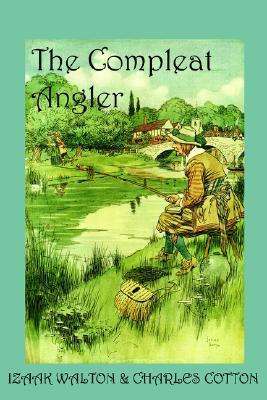Chapter XIV — The Compleat Angler
byChapter XIV – The Compleat Angler opens with an exchange that gently shifts from instruction to fellowship, set against a peaceful riverside scene. Piscator, seasoned and thoughtful, introduces the barbel—an often-overlooked but strong and enduring fish. Its name comes from the small whisker-like barbels under its mouth, a unique trait among river fish. Though prized for the fight it offers, the barbel is not favored for the table. Its flesh can be bland, and its spawn is said to be dangerous, particularly during the warmer months. Piscator warns against consuming it in May, a caution rooted in both folklore and accounts from scholars who have suffered ill effects.
In describing the barbel’s preferred environment, Piscator paints a vivid picture of a fish in tune with shifting currents. During summer, it seeks the tumbling rush of clear streams, hiding beneath overhanging weeds where it feels safe and secure. When the season cools, barbel move into deeper, quieter waters, where they rest until spring’s stirrings bring them out again. The Danube, he says, teems with barbel, countering claims from earlier writers who had questioned its presence. Piscator emphasizes this not to challenge authority, but to highlight the joy of learning through experience. For an angler, every pool and bend of the river offers new knowledge that books cannot always provide.
Attention turns to bait, and here Piscator reveals a more meticulous side. Barbel are not fools; they require offerings that have been chosen with care. Clean worms, flavored cheese mixed with honey, and even concoctions of sweet paste appeal to their sharp senses. The process of preparation is as important as the catch, demanding patience and precision. Fishing for barbel is not done in haste. The line must be fine yet firm, the hooks sharp, and the angler’s hand steady. With these elements in balance, success becomes more likely, though still never guaranteed. This balance of effort and uncertainty lies at the heart of Piscator’s angling philosophy.
As the afternoon light fades, conversation turns warm and reflective. Venator listens, intrigued, while the nearby milk-woman joins the scene with her daughter Maudlin. Together, the group relaxes, grateful for a simple day well spent. Piscator’s tales are not just instructive—they are generous, meant to be shared like bread or fish around a humble table. The fish caught that day are offered up not just as food, but as tokens of gratitude for kindness received. In these quiet moments, angling becomes more than a sport; it becomes a language of goodwill.
The act of fishing, as portrayed in this chapter, weaves through layers of knowledge, experience, and human connection. Piscator may speak of bait and currents, but the underlying lesson is one of patience and appreciation. There is no rush in his teaching. Instead, there is a rhythm—a pace that mirrors the rivers he loves. He invites others into this rhythm, showing how the smallest details of nature can become the richest source of joy. Whether it is learning to read a riverbank or sharing a meal with new friends, these moments stitch together the angler’s life with quiet grace.
Through the barbel and its mysteries, Piscator demonstrates that fishing is never only about the catch. It’s about immersion—into water, into thought, into friendship. The fish, in all its stubbornness and subtlety, becomes a teacher. Its presence urges the angler to observe more, wait longer, and try again with better preparation. This is the deeper reward: not just a full creel, but a full spirit. As the sun dips lower, and laughter rises between bites of shared food, the reader is left with a lasting impression of a life lived well—not in haste, but in harmony with the river’s gentle pull.


